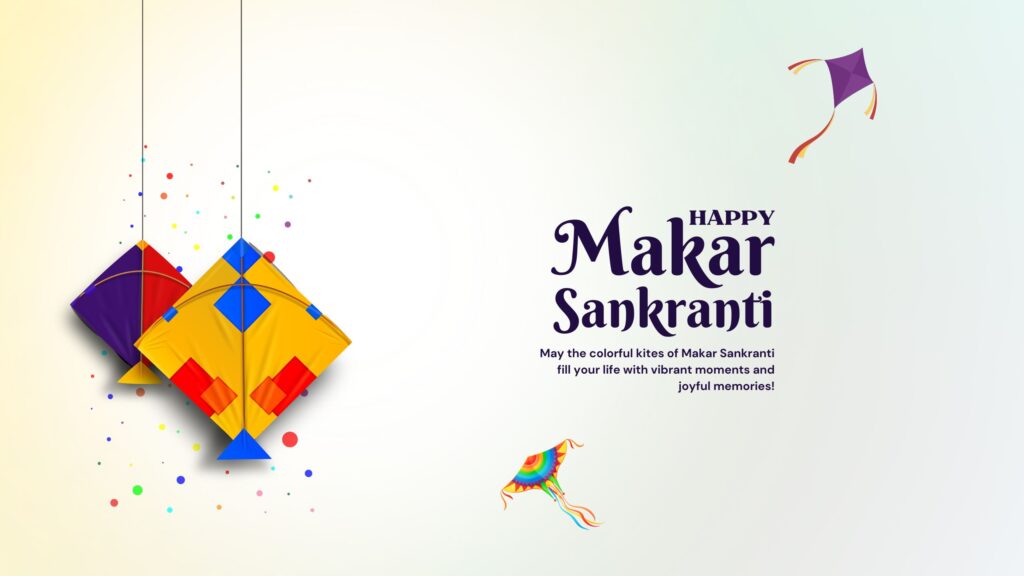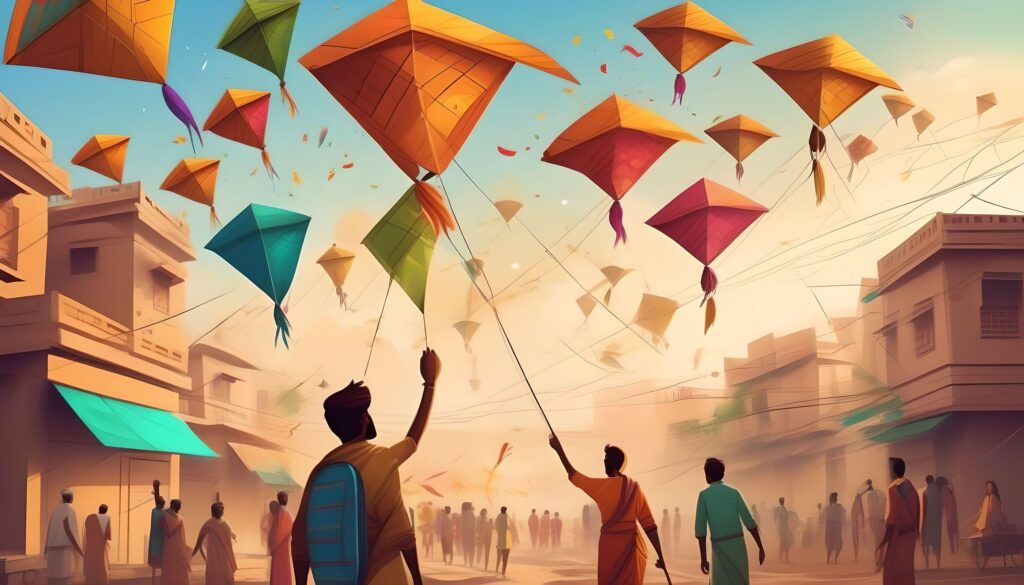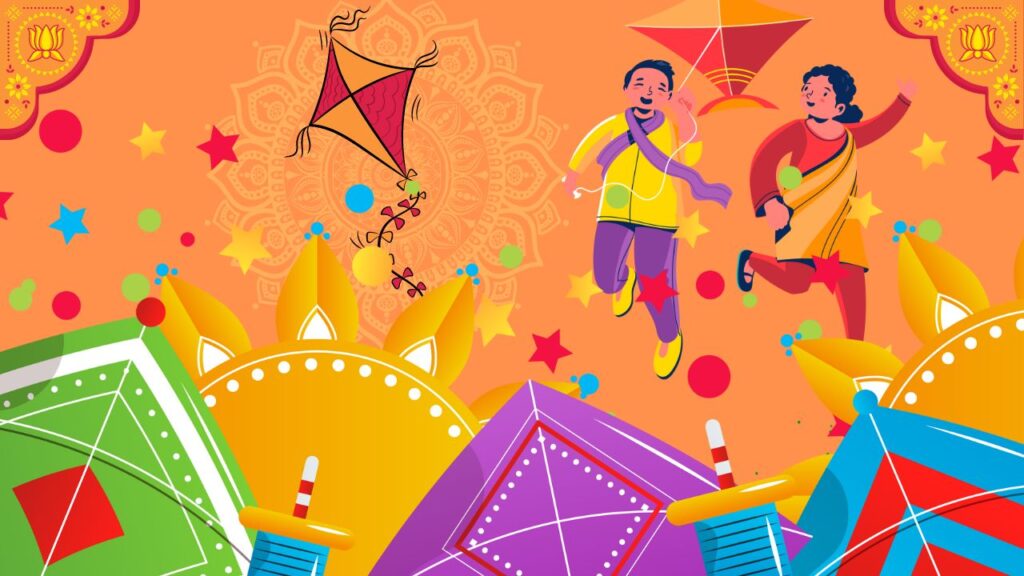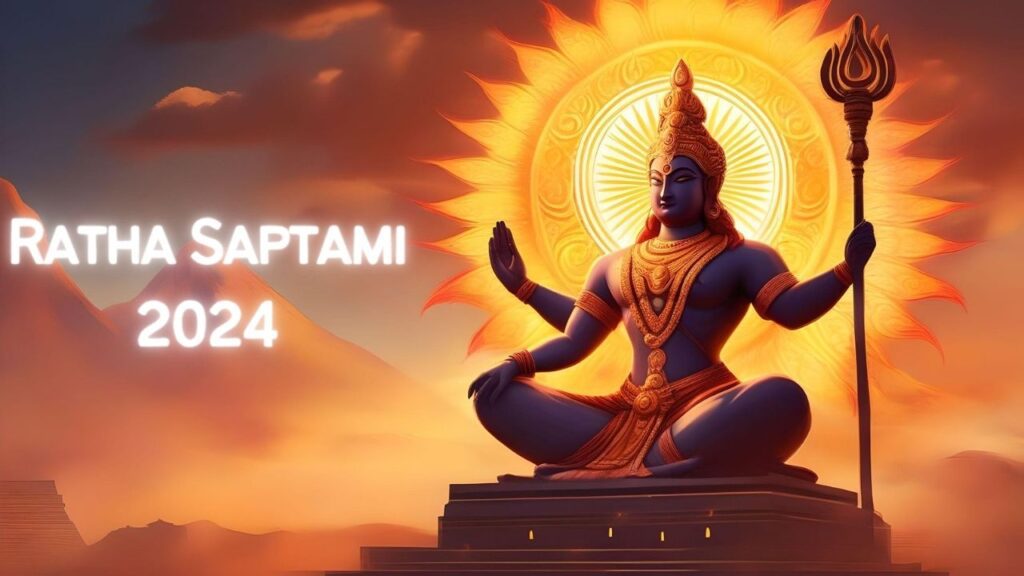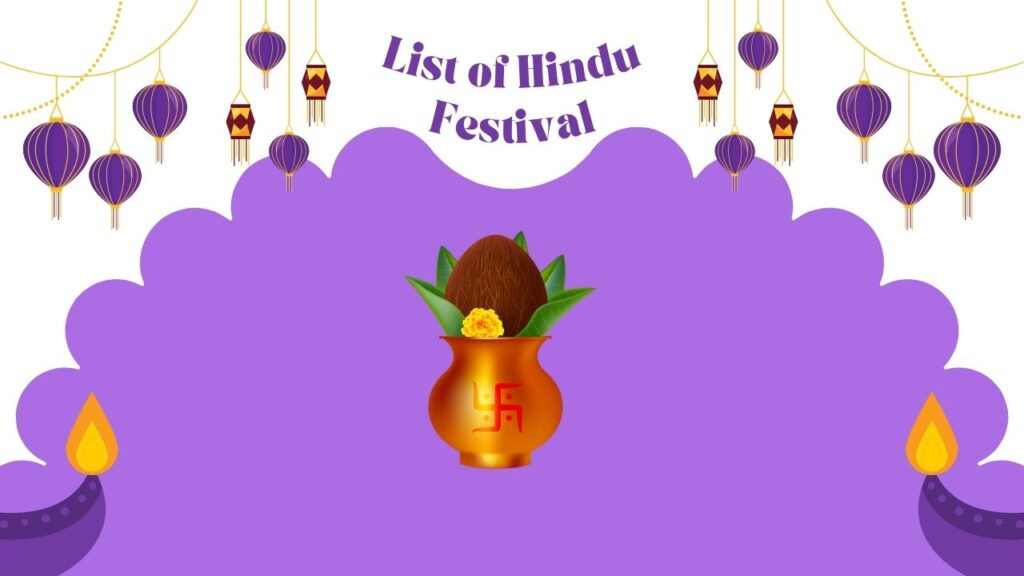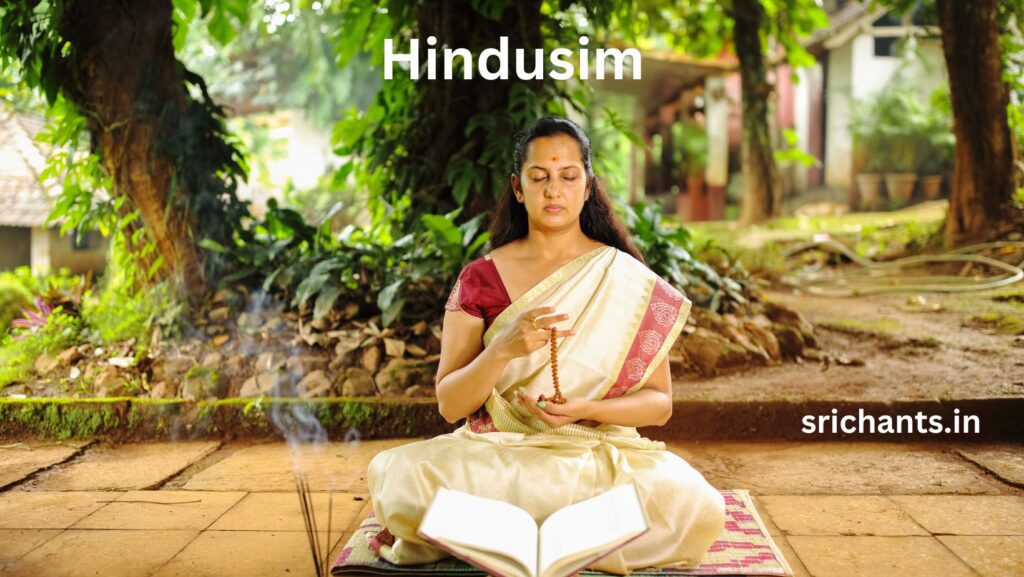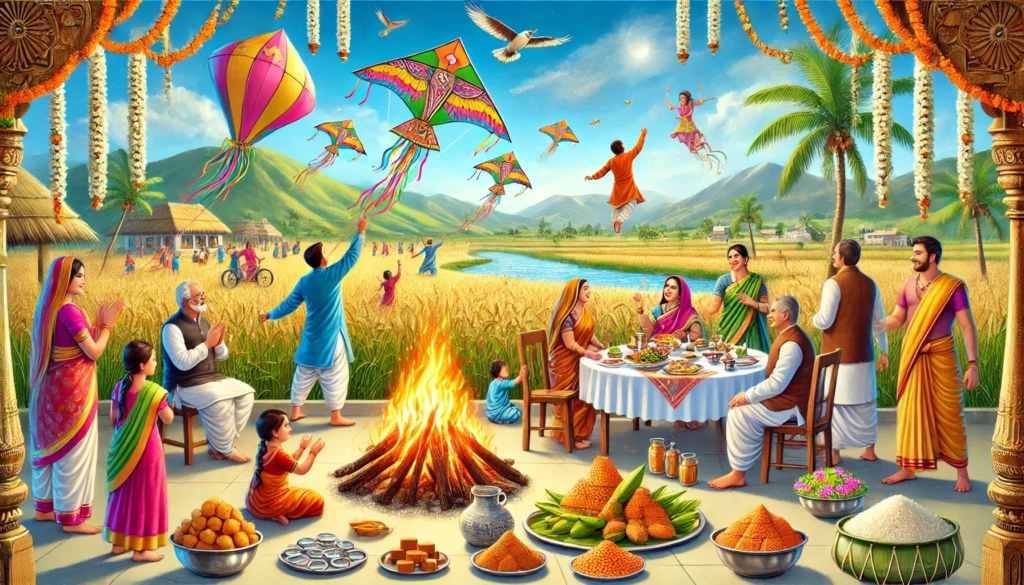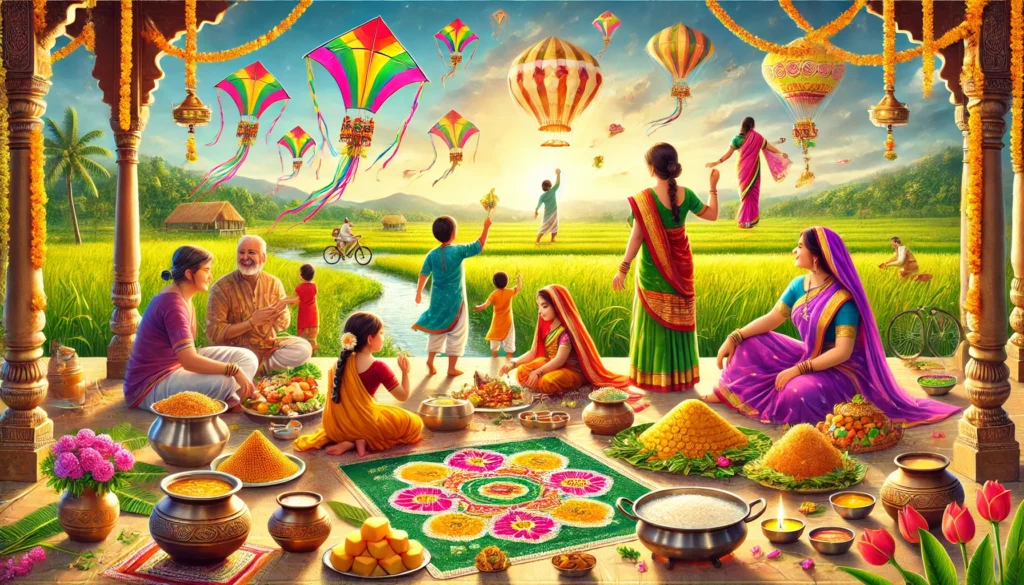Sankranti Celebration 2025 : Facts and More
Introduction
The Sun enters Makara Rashi (Capricorn) on the auspicious occasion of Makar Sankranti, one of India’s most cherished festivals. This holiday, which takes place on January 14, 2025, is celebrated all around the nation with great fervor and a wide variety of traditions. The arrival of spring heralds the arrival of longer days, the conclusion of winter, and the time for harvesting.
There is more to Sankranti than meets the eye. Gathering with loved ones and reflecting on one’s spirituality are hallmarks of this season. Millions of people love it since it’s easy to participate in and everyone is welcome.
Introduction to Sankranti
The Sanskrit origin of the word “Sankranti” is its meaning of “movement” or “transition.” This is the first day of the Sun’s Uttarayana, its trek toward the north. As a symbolic of rebirth and the annihilation of evil, this astronomical event holds immense meaning for Hindus.
The festival is celebrated under different names in various states of India:
- Tamil Nadu: Pongal
- Punjab: Lohri and Maghi
- Gujarat: Uttarayan
- Assam: Magh Bihu
- Maharashtra: Sankranti with Tilgul Tradition
Each state brings its unique cultural flavor to the celebration, yet the essence of gratitude and joy remains the same.
Significance of Sankranti
1. Astronomical Importance
One of the few Indian holidays observed on a specific date annually, Makar Sankranti is rooted in the solar calendar. It is believed that warmer days will begin with the Sun’s entry into Capricorn, signaling the end of the frigid winter solstice.
2. Religious Beliefs
According to Hindu belief, Sankranti is a very holy day. It is believed that one can atone for their sins by bathing on this day in one of the sacred rivers, such as the Ganga, Yamuna, or Godavari. It is also a good time to seek the blessings of the gods and launch new endeavors.
3. Harvest Festival
The harvest season falls on the same day as the event. Farmers take great delight in the fruits of their labor and the gifts from Mother Nature. In celebration of the Sun, Earth, and all the other elements that contribute to life and nourishment, we pause to give thanks.
How Sankranti Is Celebrated Across India
1. Tamil Nadu: Pongal
Pongal is a four-day celebration in Tamil Nadu.
- Bhogi Pongal: The first day involves cleaning homes and burning old items to symbolize renewal.
- Surya Pongal: On the second day, a sweet dish called Pongal is cooked and offered to the Sun God.
- Mattu Pongal: The third day is dedicated to honoring cattle, which play a vital role in agriculture.
- Kaanum Pongal: Families meet and enjoy festive meals together.
2. Punjab: Lohri and Maghi
On the eve of Sankranti, the festivities in Punjab commence with Lohri. Gathering around a big campfire, family sing, dance, and throw food into the fire. On Sankranti, also known as Maghi, people eat traditional dishes like sarson da saag and makki di roti.
3. Gujarat: Uttarayan
When people think of kite flying, Gujarat’s Uttarayan comes to mind. Kites of many colors flood the sky, and the festivalgoers are both competitive and upbeat. In preparation for the celebrations, families make undhiyu, a dish of mixed vegetables, and jalebi.
4. Assam: Magh Bihu
Feasts, bonfires, and community games are part of the Assam harvest festival known as Magh Bihu. People build makeshift shacks called Bhelaghar and gather in them to eat and cook. Rice cakes and pitha, two traditional Indian delicacies, are made.
5. Maharashtra: Tilgul Tradition
Tilgul laddoos are the main attraction of the Maharashtra celebration. One interpretation of the proverb “Tilgul ghya, god god bola” is “Take this sweet and speak sweetly.” Goodwill and harmony are emphasized in this tradition.
Traditional Foods of Sankranti
Sankranti celebrations would not be complete without food. Sesame (til) and jaggery (gud) are common ingredients in several regional specialties. All three of these elements stand for oneness, vitality, and hospitality.
- Tilgul Laddoos: Made with sesame seeds and jaggery, these are a must-have in Maharashtra.
- Pongal: A sweet rice dish cooked in Tamil Nadu with jaggery and milk.
- Khichdi: In Uttar Pradesh and Bihar, people prepare a savory rice and lentil dish called khichdi.
- Pithe and Payesh: In West Bengal, sweet rice cakes and milk-based desserts are enjoyed.
Rituals and Customs
1. Holy Dips
Devotees cleanse their spirits and receive blessings by taking a plunge in rivers that are considered sacred. At this time of year, Prayagraj and Haridwar are among the locations that experience a significant influx of pilgrims.
2. Worship of the Sun God
People express their gratitude to the Sun for the life-giving energy it provides by presenting it with water, flowers, and prayers.
3. Charity and Donations
Sankranti is a time when it is usual practice to give away items such as food, clothing, and money to those who are less fortunate. The ethos of the festival, which is one of caring and sharing, is reflected in this act of kindness.
4. Social Bonding
Family get-togethers and neighborhood get-togethers are common during the Sankranti festival. The event promotes the strengthening of social bonds via activities such as the preparation of food together and participation in cultural programs.
Facts About Sankranti
- Universal Celebration: Though celebrated under different names, Sankranti is observed in almost every state of India.
- Health Benefits: Consuming sesame and jaggery during Sankranti has health benefits, such as boosting immunity and providing warmth in winter.
- Astronomical Significance: It is one of the few Hindu festivals based on the solar calendar.
- Longest Celebration: In some regions, such as Tamil Nadu, the festivities last up to four days.
How to Celebrate Sankranti in 2025
1. Participate in Local Traditions
Gain an appreciation for the festival’s multifaceted nature by participating in a variety of regional traditions, such as the Pongal celebration in Tamil Nadu or the kite flying in Gujarat.
2. Cook Festive Foods
Prepare traditional dishes like tilgul laddoos, khichdi, or Pongal with your family.
3. Spread Kindness
Engage in acts of charity by donating to the needy. This will bring more joy to your celebration.
4. Embrace Nature
Spend time outdoors, whether flying kites, visiting a river for a holy dip, or enjoying the warmth of a bonfire.
Conclusion
Makar Sankranti, a celebrated festival in India, takes place on January 14, 2025, marking the arrival of spring and the conclusion of winter. The festival is rooted in the solar calendar and holds immense significance for Hindus, as it symbolizes rebirth and the annihilation of evil. Each state brings its unique cultural flavor to the celebration, yet the essence of gratitude and joy remains the same.
Sankranti is celebrated under different names in various states of India, such as Tamil Nadu (Pongal), Punjab (Lohri and Maghi), Gujarat (Uttarayan), Assam (Magh Bihu), and Maharashtra (Tilgul Tradition). Each state brings its unique cultural flavor to the celebration, yet the essence of gratitude and joy remains the same.
Significance of Sankranti includes its astronomical importance, religious beliefs, harvest festival, and religious beliefs. In Tamil Nadu, Pongal is a four-day celebration, with Bhogi Pongal, Surya Pongal, Mattu Pongal, Kaanum Pongal, Lohri and Maghi, Gujarat’s Uttarayan, Assam’s Magh Bihu, and Maharashtra’s Tilgul Tradition.
Traditional foods of Sankranti include sesame (til) and jaggery (gud), which stand for oneness, vitality, and hospitality. In Maharashtra, Tilgul Laddoos are made with sesame seeds and jaggery, while Pongal is a sweet rice dish cooked in Tamil Nadu with jaggery and milk. Khichdi is a savory rice and lentil dish prepared in Uttar Pradesh and Bihar, while Pitha and Payesh are enjoyed in West Bengal.
Rituals and customs during Sankranti include holy dips, worship of the Sun God, charity and donations, and social bonding. Devotees cleanse their spirits and receive blessings by taking a plunge in sacred rivers, and people express gratitude to the Sun for the life-giving energy it provides. Sankranti is also a time when it is usual practice to give away items such as food, clothing, and money to those who are less fortunate.
Facts about Sankranti include its universal celebration, health benefits from sesame and jaggery consumption, its Astronomical Significance, and its longest celebration in some regions. To celebrate Sankranti in 2025, one can participate in local traditions, cook festive foods, spread kindness, and embrace nature.
In summary, Makar Sankranti is a significant event in India, celebrated across various states with a wide variety of traditions. It is a universal celebration, rooted in the solar calendar, and offers numerous health benefits. Participating in local traditions, cooking festive foods, spreading kindness, and spending time outdoors are all ways to appreciate the festival’s multifaceted nature.
